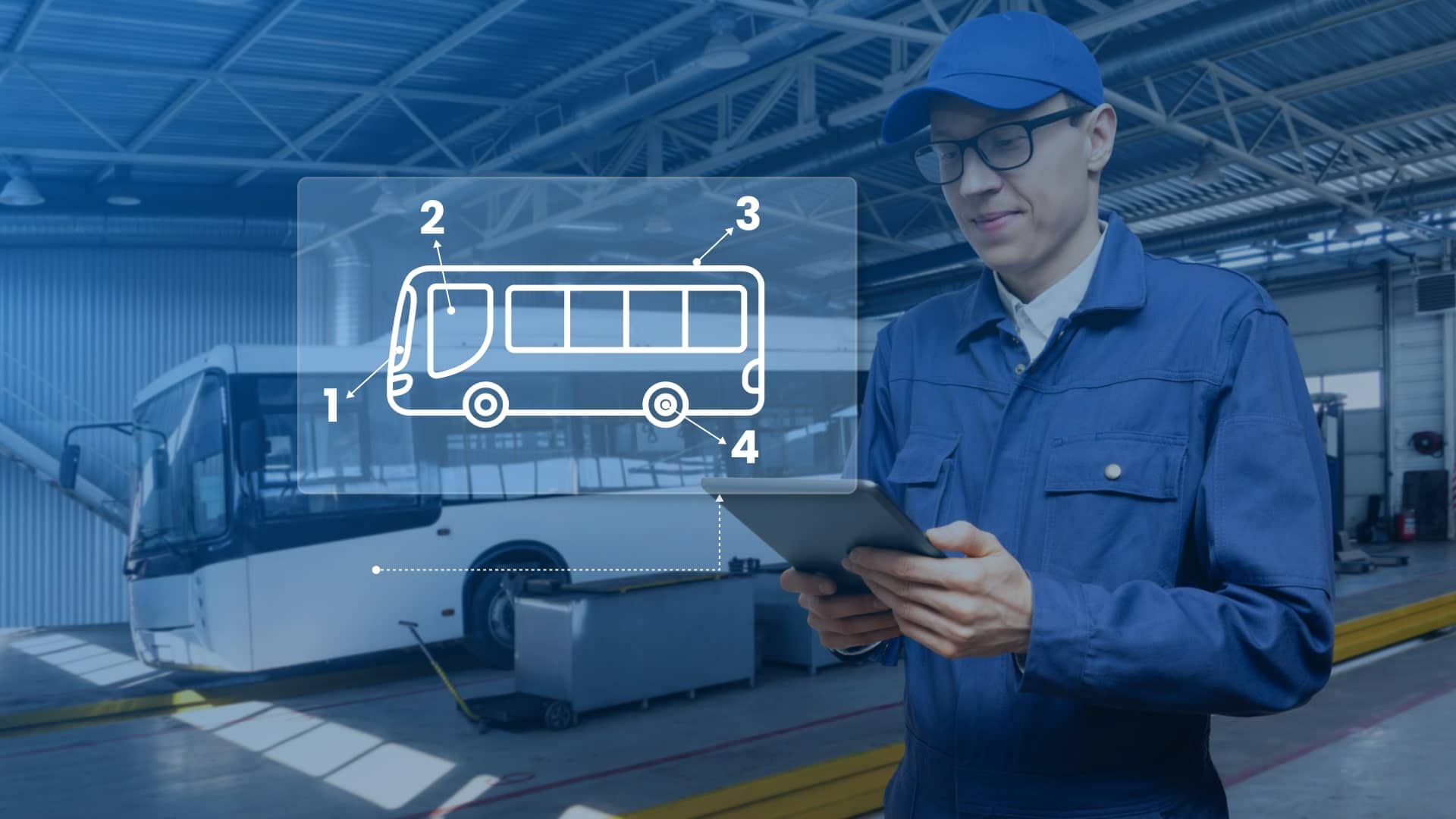How Bus Fleet Maintenance Software helps Public Transportation
In the bustling world of public transportation, efficiency and reliability are king. As cities grow and demands on public transport systems increase, the need for effective management tools has never been more critical. Enter bus fleet maintenance software, a revolutionary tool transforming the landscape of public transportation. This blog delves into the nuances of this software, highlighting its necessity, what to look for when choosing a system, and the myriad benefits it offers to fleet owners.
The Necessity of Bus Fleet Maintenance Software
Why is bus fleet maintenance software crucial in today’s public transportation sector? The answer lies in the complex nature of managing a large fleet of buses. Traditional methods are often fraught with inefficiencies, leading to increased costs, downtime, and unhappy passengers. Bus fleet maintenance software streamlines operations, ensuring that buses are well-maintained, safe, and ready to serve the public efficiently. It’s not just a tool; it’s a paradigm shift in how fleet maintenance is approached, leading to more reliable service and enhanced public trust.
Choosing the Right Software for Your Fleet
In the quest for operational excellence, selecting the right bus fleet maintenance software is a pivotal decision for transport managers. This software doesn’t just keep your buses running; it drives efficiency, safety, and reliability across your entire operation. In this guide, we’ll navigate the essentials of choosing the software that best fits your needs, ensuring a smooth ride ahead for your fleet.
Understanding Your Needs
Firstly, assess your specific needs. Every fleet is unique, and understanding your operational requirements is crucial. Consider the size of your fleet, the complexity of your operations, and your long-term goals. This understanding forms the foundation upon which you can evaluate different software options.
Key Features to Look For
When it comes to bus fleet maintenance software, several core features are essential:
- Real-Time Monitoring: Software that provides real-time updates helps you respond swiftly to any issues and optimize routes and schedules.
- Maintenance Scheduling: Automated scheduling ensures regular maintenance checks, preventing breakdowns and extending the lifespan of your buses.
- Inventory Management: Keep track of parts and supplies to avoid any unexpected shortages or overstock situations.
- Comprehensive Reporting: Detailed reports allow you to analyze performance, identify trends, and make informed decisions.
- User-Friendly Interface: The software should be easy to navigate, reducing the learning curve for your team.
Considerations for Integration and Scalability
Furthermore, the right bus fleet maintenance software should seamlessly integrate with your existing systems. It should enhance your operations without causing disruptions. Additionally, consider scalability. As your fleet grows, your software should be capable of growing with you, continuing to meet your needs without requiring a complete system overhaul.
Evaluating Cost and ROI
While cost is a significant factor, it’s vital to consider the return on investment (ROI) as well. Cheaper options might save money upfront but could lead to more expenses down the line due to less efficiency or more frequent breakdowns. Conversely, more expensive software might offer features that significantly boost your operation’s efficiency, leading to long-term savings.
Seeking Reviews and Recommendations
Don’t underestimate the power of experience. Seek reviews and recommendations from peers in the industry who have used bus fleet maintenance software. Their insights can guide you toward a solution that has been tried and tested in the real world.
Trial Periods and Demonstrations
Before making a final decision, take advantage of trial periods and demonstrations. These opportunities allow you to see the software in action and determine if it’s a good fit for your operation.
Making the Decision
Finally, making the right choice involves balancing all these factors. Consider your needs, the features offered, integration capabilities, cost, and real-world user experiences. The right bus fleet maintenance software is out there, ready to transform your operation and drive you toward greater efficiency and reliability.
Advantages of Bus Fleet Maintenance Software
In the dynamic world of public transportation, the adoption of bus fleet maintenance software marks a significant leap forward. This technology isn’t just about fixing buses; it’s about revolutionizing the way fleets operate. In this article, we’ll explore the numerous advantages of implementing bus fleet maintenance software, shedding light on how it’s becoming an indispensable tool in the industry.
Streamlined Maintenance Schedules
Efficient Scheduling: One of the standout benefits of bus fleet maintenance software is its ability to streamline maintenance schedules. It ensures that each vehicle receives attention when needed, preventing minor issues from becoming major problems. This proactive approach minimizes downtime and extends the life of your fleet.
Enhanced Operational Efficiency
Real-Time Monitoring: With real-time monitoring, you’re always in the know. This feature allows for immediate response to any arising issues, ensuring that your fleet operates smoothly. Additionally, it aids in optimizing routes and schedules, leading to more efficient operations and better service for passengers.
Automated Processes: The automation of routine tasks reduces the scope for human error and frees up your staff to focus on more critical aspects of fleet management. Whether it’s scheduling repairs or ordering parts, automation ensures that everything runs like a well-oiled machine.
Cost Savings
Reduced Downtime: By preventing breakdowns and ensuring regular maintenance, bus fleet maintenance software significantly reduces downtime. Fewer unexpected repairs mean less money spent and more time on the road.
Inventory Management: Keeping track of parts and supplies is easier than ever. This efficient management prevents overstocking and shortages, saving money and ensuring that the right parts are available when needed.
Safety and Compliance
Enhanced Safety: Regular maintenance ensures that each bus is safe for the road, protecting not just the passengers but also the drivers. By maintaining high safety standards, bus fleet maintenance software also helps in complying with regulatory requirements, avoiding costly fines and penalties.
Data-Driven Decision Making
Informed Decisions: With access to comprehensive reports and analytics, you can make informed decisions that drive your fleet forward. This data-driven approach allows for better resource allocation, performance tracking, and strategic planning.
Environmental Impact
Reduced Emissions: Well-maintained buses mean better fuel efficiency and lower emissions. By using bus fleet maintenance software, you’re not just saving money; you’re also contributing to a cleaner, greener environment.
Key Considerations for Fleet Owners
When integrating bus fleet maintenance software, fleet owners must be diligent. Here are some considerations to keep in mind:
Compatibility: Ensure the software integrates seamlessly with your existing systems.
Scalability: Choose a solution that can grow with your fleet.
Support: Opt for a provider that offers excellent customer service and technical support.
Security: Strong data protection measures are crucial to safeguard sensitive information.
Cost: Consider not just the initial investment but also the long-term value the software brings.
Making an informed choice requires a balance between immediate needs and future growth, ensuring that the software remains a valuable asset over time.
Conclusion
Bus fleet maintenance software is more than just a tool; it’s a transformative force in public transportation. By streamlining operations, enhancing safety, and driving down costs, this technology is paving the way for a future where public transport is more reliable, efficient, and customer-focused. For fleet owners, the decision to adopt bus fleet maintenance software is not just an operational one; it’s a step towards a more sustainable and forward-thinking approach to public transportation. As we move into an era where efficiency is paramount, this software isn’t just an option; it’s an essential component of success in the dynamic world of public transportation.





